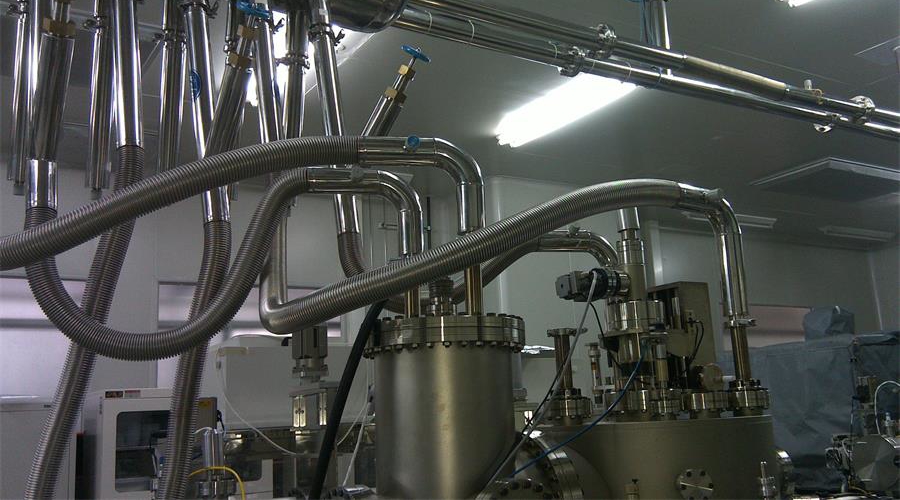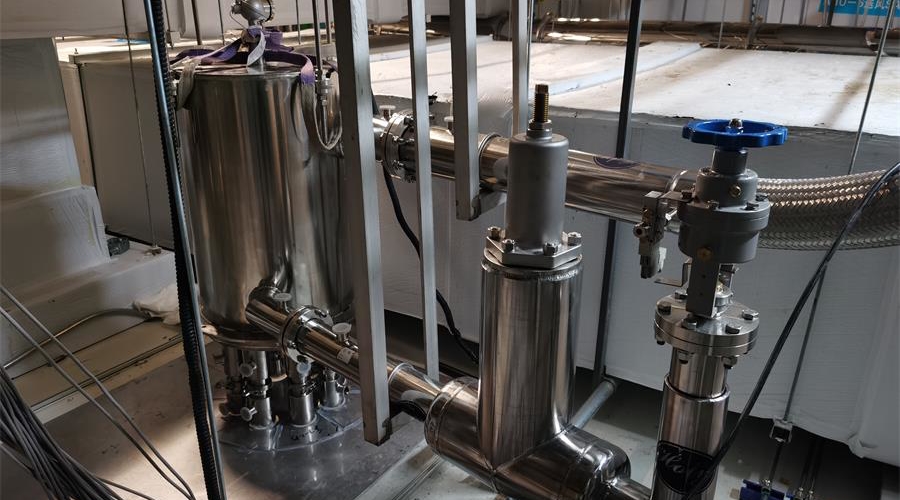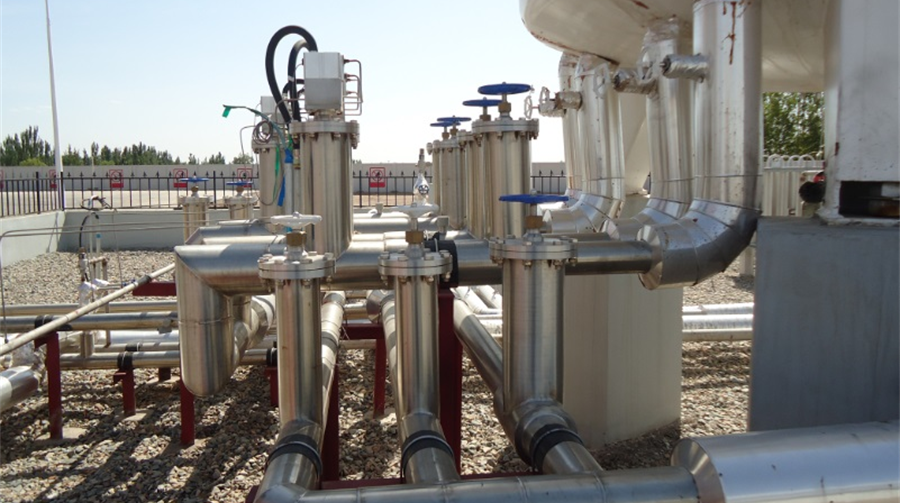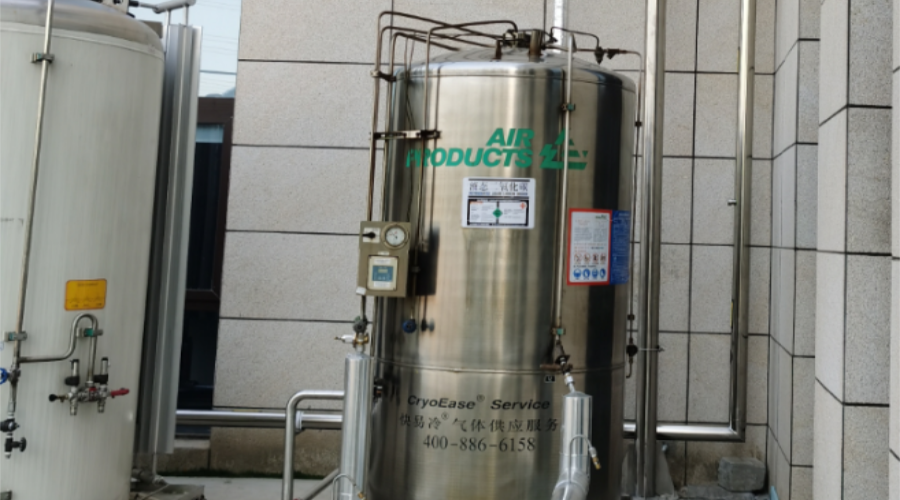



Liquid nitrogen: Nitrogen gas in the liquid state. Inert, colorless, odorless, non-corrosive, non-flammable, extremely cryogenic temperature. Nitrogen forms the majority of the atmosphere (78.03% by volume and 75.5% by weight). Nitrogen is inactive and does not support combustion. Frostbite caused by excessive endothermic contact during vaporization.
Liquid nitrogen is a convenient cold source. Due to its unique properties, liquid nitrogen has been gradually paid more and more attention and recognized by people. It has been more and more widely used in animal husbandry, medical industry, food industry, and cryogenic research fields. In electronics, metallurgy, aerospace, machinery manufacturing and other aspects of the application has been expanding and developing.
Cryogenic superconducting
Superconductor unique characteristics, so that it is likely to be widely used in a variety of categories. Superconductor is obtained by using liquid nitrogen instead of liquid helium as superconducting refrigerant, which opens up the application of superconducting technology in a wide range and is regarded as one of the great scientific inventions in the 20th century.
Superconducting magnetic levitation skills is a superconducting ceramic YBCO, when the superconducting material is cooled to liquid nitrogen temperature (78K, proportional to -196~C), from normal changes to superconducting state. The magnetic field generated by the shielded current pushes against the track's magnetic field, and if the force is greater than the weight of the train, the car can be suspended. At the same time, part of the magnetic field is trapped in the superconductor due to the magnetic flux pinning effect during the cooling process. This trapping magnetic field is attracted to the track's magnetic field, and because of both repulsion and attraction, the car stays firmly suspended above the track. In contrast to the general effect of same-sex repulsion and opposite-sex attraction between magnets, the interaction between superconductor and external magnetic field both pushes out and attracts each other, so that both superconductor and eternal magnet can resist their own gravity and suspend or hang upside down under each other.
Electronic components manufacturing and testing
Environmental stress screening is to select the number of model environmental factors, apply the right amount of environmental stress to the components or the whole machine, and cause the process defects of components, that is, the defects in the process of production and installation, and give correction or replacement. Ambient stress screening is useful to accept temperature cycle and random vibration. Temperature cycle test is to accept high temperature change rate, large thermal stress, so that the components of the different materials, due to the joint bad, the material's own asymmetry, defects in the process caused by the hidden trouble and agile failure, accept the temperature change rate of 5℃/ min. The limit temperature is -40℃, +60℃. The number of cycles is 8.Such a combination of environmental parameters makes virtual welding, clipping parts, components of their own defects exposed more obvious. For mass temperature cycle tests, we can consider the acceptance of two box method. In this environment, screening should be held at the level.
Liquid nitrogen is a faster and more useful method of shielding and testing electronic components and circuit boards.
Cryogenic ball milling skills
Cryogenic planetary ball mill is the liquid nitrogen gas continuously input into the planetary ball mill equipped with a heat preservation cover, the cold air will be high speed rotation of the heat generated by the ball grinding tank real-time absorption, so that the ball grinding tank containing materials, grinding ball is always in a certain cryogenic environment. In cryogenic environment mixing, fine grinding, new product development and small batch production of high-tech materials. The product is small in size, full in effect, high in compliance, low in noise, widely used in medicine, chemical industry, environmental protection, light industry, building materials, metallurgy, ceramics, minerals and other parts.
Green machining skills
Cryogenic cutting is the use of cryogenic fluid such as liquid nitrogen, liquid carbon dioxide and cool air spray to the cutting system of the cutting area, resulting in the cutting area of local cryogenic or ultra-cryogenic state, using the cryogenic brittleness of the workpiece under cryogenic conditions, improve the workpiece cutting machinability, tool life and workpiece surface quality. According to the difference of cooling medium, cryogenic cutting can be divided into cool air cutting and liquid nitrogen cooling cutting. Cryogenic cool air cutting method is by spraying -20℃ ~ -30℃ (or even lower) cryogenic airflow to the processing part of the tool tip, and mixed with trace plant lubricant (10~20m 1 per hour), so as to play the role of cooling, chip removal, lubrication. Compared with traditional cutting, cryogenic cooling cutting can improve processing compliance, improve workpiece surface quality, and almost no pollution to the environment. The processing center of Japan Yasuda Industry Company accepts the layout of adiabatic air duct inserted in the middle of the motor shaft and cutter shaft, and directly leads to the blade using the cryogenic cool wind of -30℃.This arrangement greatly improves the cutting conditions and is beneficial to the implementation of cold air cutting technology. Kazuhiko Yokokawa conducted research on cool air cooling in turning and milling. In the milling test, the water base cutting fluid, normal temperature wind (+10℃) and cool air (-30℃) were used to compare the force. The results showed that the tool durability was improved significantly when the cool air was used. In the turning test, the tool wear rate of cool air (-20℃) is significantly lower than that of normal air (+20℃).
Liquid nitrogen cooling cutting has two important applications. One is to use bottle pressure to spray liquid nitrogen directly into the cutting area like cutting fluid. The other is to indirectly cool the tool or workpiece by using the evaporation cycle of liquid nitrogen under heat. Now cryogenic cutting is important in the processing of titanium alloy, high manganese steel, hardened steel and other difficult to process materials. KPRaijurkar adopted H13A carbide tool and used liquid nitrogen cycle cooling tool to carry out cryogenic cutting experiments on titanium alloy. The test results showed that compared with traditional cutting methods, tool wear was eliminated obviously, cutting temperature was reduced by 30%, and workpiece surface machining quality was greatly improved. Wan Guangmin adopted the indirect cooling method to carry out cryogenic cutting experiments on high manganese steel, and the results are commented. When adopting the indirect cooling method to process high manganese steel at cryogenic, the tool force is eliminated, the tool wear is reduced, the work hardening signs are improved, and the surface quality of the workpiece is also improved. Wang Lianpeng et al. adopted the method of liquid nitrogen spraying in low-temperature machining of quenched steel 45 on CNC machine tools, and commented on the test results. The tool durability and workpiece surface quality could be improved by adopting liquid nitrogen spraying method in low-temperature machining of quenched steel 45.
In liquid nitrogen cooling processing state, carbide material to connect the bending strength, fracture toughness and corrosion resistance, strength, the hardness increases with temperature is low and therefore cemented carbide cutting tool material in the liquid nitrogen cooling can probably connect the excellent cutting performance, like at room temperature, and its performance is determined by the number of the binding phase. For high speed steel, with the cryogenic, the hardness increases and the impact strength is low, but overall can link better cutting performance. He on some materials in cryogenic improvement of its cutting machinability held a study, the selection of low carbon steel AISll010, high carbon steel AISl070, bearing steel AISIE52100, titanium alloy Ti-6A 1-4V, cast aluminum alloy A390 five materials, the implementation of research and evaluation: Due to the excellent brittleness at cryogenic, the desired machining results can be obtained by cryogenic cutting. For high carbon steel and bearing steel, temperature rise in cutting zone and tool wear rate can be restrained by liquid nitrogen cooling. In the cutting casting aluminum alloy, the application of cryogenic cooling can improve tool hardness and tool resistance to silicon phase abrasive wear ability, in the processing of titanium alloy, at the same time cryogenic cooling tool and workpiece, useful low cutting temperature and eliminate the chemical affinity between titanium and tool material.
Other applications of liquid nitrogen
The Jiuquan satellite sent the central special fuel station to produce liquid nitrogen, a propellant for rocket fuel, which is pushed into the combustion chamber at high pressure.
High temperature superconducting power cable. It is used to freeze the liquid pipeline in emergency maintenance. Applied to cryogenic stabilization and cryogenic quenching of materials. Liquid nitrogen cooling device skills (thermal expansion and cold contraction signs in the industry application) is also widely used. Liquid nitrogen cloud seeding skills. Liquid nitrogen drainage skills of real-time liquid drop jet, is constantly in-depth research. Adopt nitrogen underground fire extinguishing, fire is quickly destroyed, and eliminate the damage of gas explosion. Why choose liquid nitrogen: Because it cools faster than other methods, and does not react chemically with other substances, greatly throttles space and provides a dry atmosphere, it is environmentally friendly (liquid nitrogen is directly volatilized into the atmosphere after use, without leaving any pollution), it is simple and convenient to use.
HL Cryogenic Equipment
HL Cryogenic Equipment which was founded in 1992 is a brand affiliated to HL Cryogenic Equipment Company Cryogenic Equipment Co.,Ltd. HL Cryogenic Equipment is committed to the design and manufacture of the High Vacuum Insulated Cryogenic Piping System and related Support Equipment to meet the various needs of customers. The Vacuum Insulated Pipe and Flexible Hose are constructed in a high vacuum and multi-layer multi-screen special insulated materials, and passes through a series of extremely strict technical treatments and high vacuum treatment, which is used for transferring of liquid oxygen, liquid nitrogen, liquid argon, liquid hydrogen, liquid helium, liquefied ethylene gas LEG and liquefied nature gas LNG.
The product series of Phase Separator, Vacuum Pipe, Vacuum Hose and Vacuum Valve in HL Cryogenic Equipment Company, which passed through a series of extremely strict technical treatments, are used for transferring of liquid oxygen, liquid nitrogen, liquid argon, liquid hydrogen, liquid helium, LEG and LNG, and these products are serviced for cryogenic equipment (e.g. cryogenic storage tank, dewar and coldbox etc.) in industries of air separation, gases, aviation, electronics, superconductor, chips, pharmacy, biobank, food & beverage, automation assembly, chemical engineering, iron & steel, rubber, new material manufacturing and scientific research etc.
Post time: Nov-24-2021






